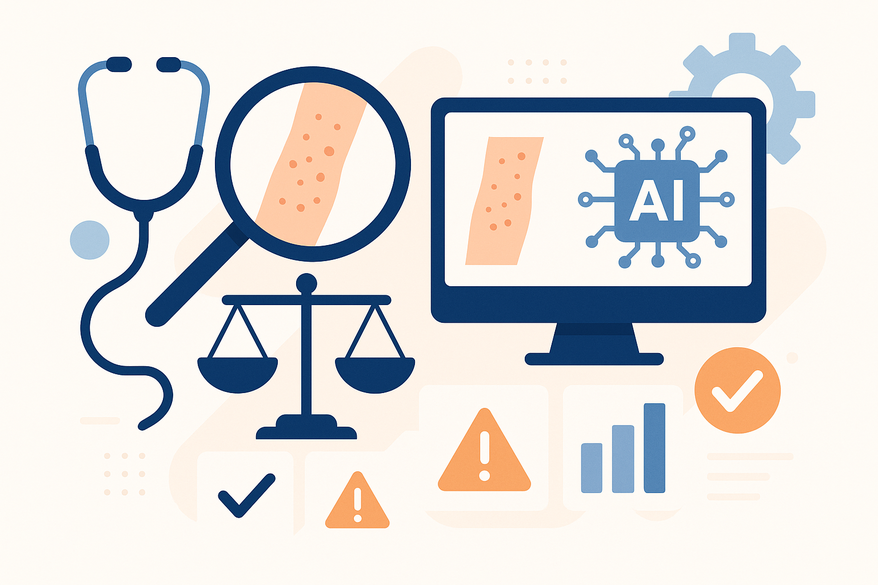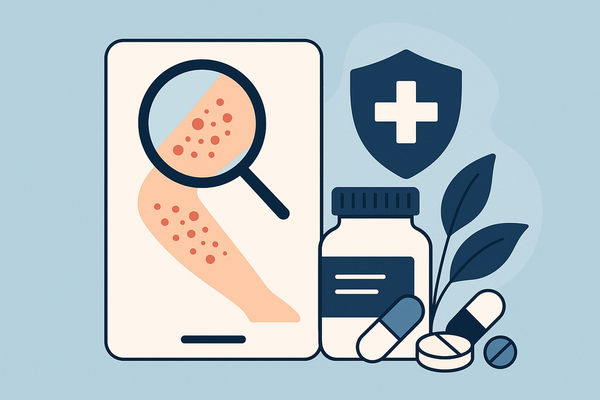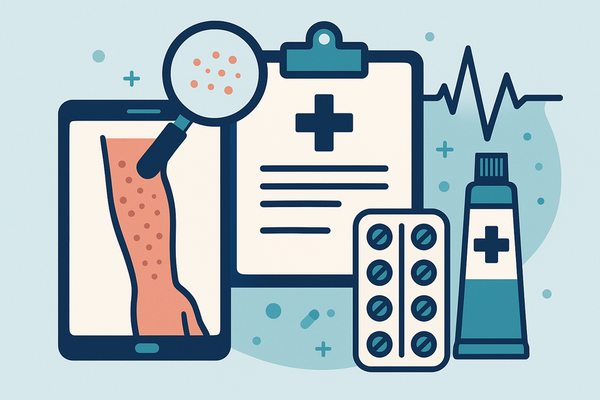How Accurate Is Rash Detection with AI? Exploring Reliability and Metrics
Discover how accurate AI-based rash detection is compared to traditional methods, including key metrics and influencing factors on reliability.

Estimated reading time: 6 minutes
Key Takeaways
- AI-based rash detection systems can achieve high accuracy (mid-80% to nearly 100%) across conditions.
- Core performance metrics include accuracy, sensitivity, and specificity.
- Accuracy depends on data quality, algorithm design, and demographic representation.
- AI tools should augment—not replace—clinician judgment.
- Future best practices: diverse datasets, explainable AI, and regular audits.
Table of Contents
- Understanding AI-Driven Rash Detection
- Measuring Rash Detection Accuracy and Reliability
- Factors Influencing AI Accuracy
- Light-Touch on Real-World Tools
- Future of AI in Dermatology: Developments and Best Practices
- Conclusion
- FAQ
Understanding AI-Driven Rash Detection
Deep learning neural networks form the backbone of AI-driven rash detection. These systems ingest:
- High-resolution skin photos
- Patient metadata (age, medical history)
- Expert annotations of rash types
The full technical workflow is detailed in the blog.
Machine Learning Workflow
1. Data Collection
2. Annotation by dermatologists
3. Model Training (deep learning architectures)
4. Validation on unseen cases
5. Deployment in clinical software or mobile apps
Traditional vs AI Rash Diagnosis
• Traditional: Relies on dermatologist visual exam, dermatoscopic inspection, and lab biopsies when needed.
• AI-Driven Rash Detection: Processes hundreds of images per hour, identifies subtle pattern correlations beyond human perception, and standardizes assessments.
Measuring Rash Detection Accuracy and Reliability
Key Metrics Defined
• Accuracy: (True Positives + True Negatives) ÷ Total Cases.
• Sensitivity (True Positive Rate): Proportion of actual rashes correctly identified.
• Specificity (True Negative Rate): Proportion of healthy skin correctly classified as non-rash.
• False Positives: Healthy skin flagged as rash.
• False Negatives: Missed cases of actual rash.
Real-World Performance Examples
• Inflammatory acne detection: 84.1% overall accuracy in a clinical trial of 2,000 cases.
• Moleanalyzer Pro (skin lesion tool): Clinician accuracy boosted from 74.1% → 86.4%; tool sensitivity 81.6%, specificity 88.9%.
• Skin cancer screening apps: Up to 99.8% accuracy in ruling out malignancies in low-risk lesions.
Factors Influencing AI Accuracy
- Quality & Diversity of Training Data: Thousands of images needed across all skin tones and ages; lack of representation leads to biased outcomes.
- Algorithm Design: Deep convolutional neural networks (ResNet, EfficientNet) outperform simpler classifiers.
- Environmental & Technical Variables: Poor lighting or low-resolution photos can reduce detection rates.
- Demographic Representation: Many models trained on lighter skin, reducing accuracy for darker skin tones by up to 15%.
- Technology Limitations: Atypical or rare rashes may not be in the training set, raising false negatives.
Light-Touch on Real-World Tools
Users can also leverage advanced mobile apps like Rash Detector to upload photos and receive instant AI analysis with confidence scores. Below is an example sample report generated by Rash Detector:

Future of AI in Dermatology: Developments and Best Practices
Emerging Trends
• Global skin image repositories to reduce bias.
• Explainable AI (XAI) layers to show decision pathways.
• Multi-modal diagnostics: combining images with genetic or symptom data.
Best Practices for Clinical Integration
• Maintain clinician oversight for all AI-flagged cases.
• Retrain models regularly with new, diverse data.
• Position AI as an adjunct tool, not standalone.
• Conduct routine performance audits and bias assessments.
• Ensure patient privacy and comply with data protection regulations.
Conclusion
Current AI rash detection systems achieve accuracy rates from the mid-80% range for common conditions to nearly 100% for ruling out certain cancers. While they excel in speed, scalability, and consistency, environmental variables and under-represented demographics underscore the need for continuous model improvement and human oversight. Stay informed on AI advancements, advocate for diverse training data, and always consult healthcare professionals for definitive skin diagnoses.
FAQ
What does “accuracy” really mean in AI rash detection?
Accuracy blends sensitivity and specificity. A high accuracy can mask poor sensitivity if negative cases dominate.
How does AI handle ambiguous cases?
Performance dips when features are under-represented. Borderline lesions without clear color or shape cues can lead to inconclusive AI outputs. Diverse training sets and human review mitigate this.
Are there risks in relying solely on AI?
Yes. Sole AI reliance can miss rare presentations. Regulatory bodies recommend AI as decision support, not a standalone diagnostician.
How can AI systems be used alongside traditional evaluations?
- Triage tool: AI flags urgent lesions for rapid review.
- Second opinion: Confirms or questions initial clinical impressions.
- Workflow efficiency: Automates routine screenings, freeing clinicians.
- Oversight: Final diagnosis remains with the dermatologist.





